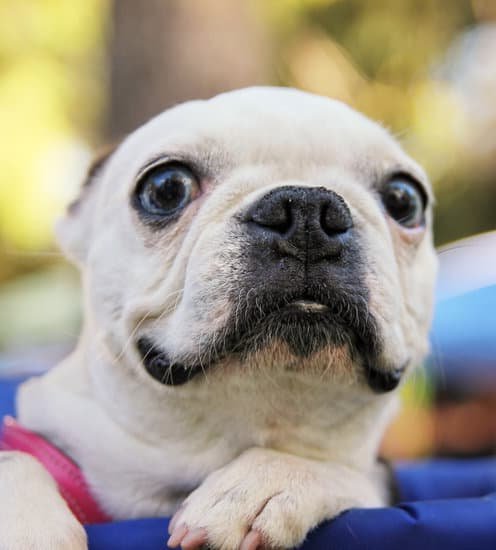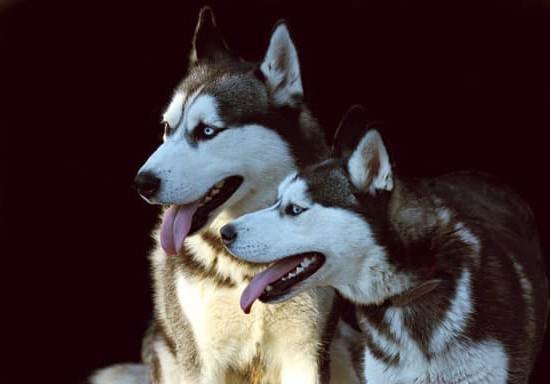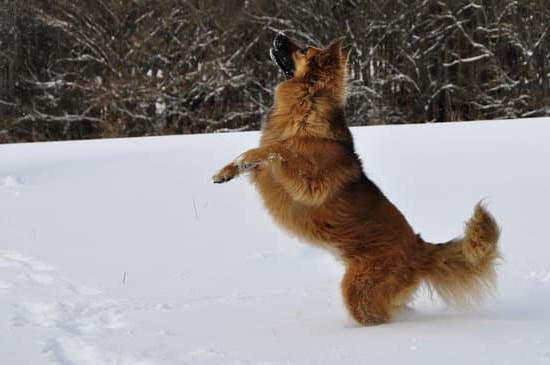Introduction
Puppy training is a great way to not only bond but also teach your puppy the basics of good behaviour. It can be an incredibly rewarding process, as it gives you the opportunity to understand your puppy, respond to their needs and learn how they communicate with you. While starting with simple tasks, such as house training and basic commands like ‘sit’ or ‘stay’, can help lay a strong foundation for their future learning, setting them up for success at an early age is key. Training should be positive; rewards-based rather than punishment-based. Rewarding good behaviour through small treats and vocal praise helps create a positive learning environment whilst providing motivation and reward for behaviours that you would like your pup to display in everyday life. Consistency is also hugely important. Finding the time every day (or even a few times a week) to practice these skills with your pup and ensuring everyone involved in their life applies the same standards and principles will help form more effective habits in the long term. Everyone’s dog has different needs so it’s important to take things step-by-step when training your pup, finding what works best for both you and your dog. As they grow into adult dogs, progression between areas such as recall/obedience work or socialisation/environmental exposure will need appropriate timing and management – working with professionals or trainers along this journey can be invaluable!
The Basics of Puppy Training
When it comes to puppy training, consistency is key. The most important thing is to be consistent when giving commands and enforcing rules. Make sure that everyone in the house is following the same patterns. This will help your pup understand what is expected of him or her. Additionally, you should use positive reinforcement when teaching your puppy basic commands like sit, stay and come. Reward good behavior with treats or verbal praise and don’t scold them if they make a mistake as this could lead to fear or anxiety.
Puppy proofing can also go along way to ensuring a successful transition into adulthood. Inspect your house for dangerous items such as electrical cords, toxic plants or hazardous objects that might be a hazard to your pup near chew on. You might also want to invest in safety gates or crates if you plan on leaving the puppy unattended at home during the day.
One of the most crucial elements of successful puppy training involves socialization. Taking your pup out for walks in public places such as parks, shopping centers and other busy areas allows them to become used to different environments and people as well as help prevent them from becoming overly protective later in life. Puppy classes are another great way to introduce him or her to new experiences like sound desensitization and traveling in cars comfortably; which aids the acclimation process into adulthood, making life much easier for years ahead!
Creating a Consistent Training Schedule
When puppy training a dog, it is important to create a consistent training schedule. Regular, frequent practice will help your dog learn the desired behaviour quicker, as well as remember it better. A basic framework for puppy training includes three core elements: teaching obedience commands, encouraging positive behaviour and correcting bad habits. Each of these components should be scheduled for at least 10 minutes per day. Start by setting aside 30 minutes each day and work up to more if time allows.
When structuring the daily training schedule, focus first on teaching obedience commands, such as sit/stay/down or heel. It is important to master these fundamentals before focusing on anything else when puppy training a dog. Use treats and praise in order to reward good behaviour and reinforce the learning process. Additionally, break each command down into small steps instead of trying to teach everything all at once; this will make teaching far simpler and can even prevent confusion in the dog’s mind. Finally, make sure to set aside some time in your lesson plan for playtime; this will help bond you with your pup while also providing a break from the lessons.
Once breakthroughs have been made in obedience commands, it is also important to encourage any positive behaviour that occurs naturally or that has already been taught – like sitting calmly when visitors come over or not barking when mail gets delivered – using treats and verbal praise rather than corrective discipline whenever possible. This reinforces desired behaviour for future reference and eventually helps your puppy learn their ‘rules’ without having to rely on constant correction from you!
As part of consistent puppy training, you must also be prepared to correct negative behaviours quickly and clearly in order to ensure they are not reinforced unwittingly. This could be anything from destroying chewed items like shoes or furniture (which can occur if dogs are left home alone too long) to jumping on visitors – habituated traits that are best addressed early on before they become deeply ingrained within your pup’s doggy personality!
Establishing Boundaries Through Commands
Puppy training is an important part of having a well-behaved and obedient dog. Establishing boundaries with commands is key to establishing respect, understanding, and harmony between you and your dog. Commands should be chosen carefully when it comes to puppy training – the right words used in the right contexts can help your puppy understand what you want from them. Start off teaching basic commands like sitting, staying, coming, and lying down. It helps to reward good behavior with treats or verbal praise for a job well done. Remember that consistency is key when it comes to puppy training as rewards need to follow immediately after the desired behavior. Before long, your pup will begin understanding basic commands and associating certain words with desired actions.
Once your puppy has gotten the hang of the basics, start introducing more complex commands such as basic tricks like rollover or play dead. Be sure to introduce these gradually so that your pup does not become overwhelmed through too much instruction at once. Additionally, try reinforcing positive behaviors associated with those commands rather than punishing negative ones – even if it is just a slightly delayed response or minor mistake by the pup on their first try! As always remain patient and consistent when puppy training – this will ensure maximum success!
Encouraging Good Behaviors with Positive Reinforcement
Puppy training should involve positive reinforcement to ensure your pup responds well to learning basic obedience commands. Positive reinforcement is simply providing rewards for desired behaviors, such as treats or praises. Rewards can be in the form of verbal praise, petting, touch, or a small treat. This will help your dog understand what it should and shouldn’t do. To get started on puppy training with positive reinforcement, establish a reward system that works for the both of you. You could provide a small treat when your pup performs correctly or give them verbal praise like “good boy” or “good girl” and pet them momentarily afterwards. It’s important to give your puppy immediate feedback by giving rewards within seconds after they demonstrate good behavior so they make the connection between their obedient behavior and being rewarded for it. Additionally, make sure you are consistent with giving rewards as puppies quickly become discouraged if they perform an action but don’t get praised or rewarded every time they do it correctly. As puppy training progresses, use fewer treats and more praises to communicate with them as you work toward teaching them more complex behaviors.
Recognizing When Training Isn’t Working and What to Do Next
If you’re struggling to successfully puppy train your dog, it could be due to a range of factors. Constant repetition and consistency with training is key! Make sure you’re providing your dog with appropriate rewards for correct behavior, and ignoring or correcting incorrect behavior. If you find that your pup isn’t responding to the same command after a few weeks, try something new such as increasing the difficulty of what you’re asking or increasing their reward for successful completion.
It may also be helpful to consider the environment you are in when trying to train your pup. Whether indoors or outdoors, it is essential that you have both time and an area free from distractions so that your pup can stay focused on the task. Be sure to also praise them positively when they follow instructions correctly – this will help them make a positive association between obedience and rewards.
If all else fails, seek professional help from an experienced dog trainer who has the time and resources needed to get through difficult puppy training issues. With the right guidance, patience, and dedication you will soon have a happy and obedient pup who listens to their commands!
Making the Training Process Fun for You and Your Puppy
Puppy training is more than just teaching your pup tricks and commands- it’s the foundation of a healthy and happy relationship between you and your furry friend. To make the training experience successful, enjoyable, and rewarding, it’s important to create a positive atmosphere in which both you and your puppy can learn. Here are some tips to keep in mind while you’re puppy training:
• Keep the lessons short – puppies only have short attention spans. Keeping ahead of that by keeping each lesson short will help ensure success.
• Offer rewards for good behavior – treats are an obvious reward for completing tasks correctly during training but even positive verbal reinforcement can offer encouragement for doing things right.
• Be consistent – this goes with all dog-related activities: when you train, take your pup out to relieve themselves, etc., consistency is key for success. Establish rules about acceptable behaviors early on and if you need help setting these up, seek out professional advice.
• Don’t rush into advanced exercises – wait until basic obedience tasks have been mastered before moving on to more complex activities. Rushing into advanced stuff could lead to frustration or confusion in both you and your pup that could negatively affect future progress.
• Have fun! Training should be a pleasant experience that both of you look forward to so add elements such as playtime to their learning sessions – this is not only beneficial but also helps create a strong bond between the two of you.
Common Missteps to Avoid When Training a Puppy
One of the most important missteps to avoid when training a puppy is not establishing clear rules and boundaries early on. Rules provide structure and security, which gives puppies an opportunity to learn proper behavior. Owners should discuss rules with all members of the household before bringing the puppy home to ensure everyone will be reminding that puppy of desired behaviors. Additionally, owners should be consistent in following through when disciplining their puppy. If they don’t, they can confuse their pet or worse yet, give it mixed signals.
Another misstep to avoid when training a puppy is giving praise indiscriminately. Praise and rewards are essential for successful clicker training, but incorrect timing can hinder results. If a pup isn’t correctly reinforced for desirable behavior, it won’t remember what put it in good standing with its owner in the first place. Furthermore, too many treats can lead to dental problems and weight gain down the road. Treats should only be given as special rewards for desired behaviors during set times throughout each day.
Finally, owners need to be aware if their pup is getting overly stressed during the learning process—signs could include panting or excessive barking—and show patience while progressing through different commands and exercises. Too much repetition might cause frustration in both human and animal alike; instead owners should opt for shorter sessions split up throughout the day or week as needed or preferred by their pup’s energy levels or attention span.
The Last Word
When it comes to training a puppy, there are many advantages and lifelong benefits that go along with it. A well-trained puppy can help promote a sense of responsibility in both the owner and the pup. Puppy training also creates better communication between the two, as commands and expectations become clearly established. This can lead to more harmonious interactions throughout the pooch’s life and a greater bond between animal and owner.
Having structure for potty training, for instance, helps to establish your puppy’s regular bathroom routines. Starting early will make this task much easier than having an older dog unlearn any bad habits that may have been formed. Proper socialization when young is also key; this will help avoid behavioral problems later on such as aggression or fearfulness when around people or other animals.
Creating boundaries for your pup helps with safety management. Teaching them to obey basic commands making them responsive at all times can be invaluable during potentially dangerous situations like crossing roads or running across yards. In addition, teaching your pup tricks is not only fun but can keep their minds active and attention focused on their owner instead of getting into trouble around the house they are in! All of these aspects of puppy training could lead to many years of joyous companionship between you and your four-legged friend.

Welcome to the blog! I am a professional dog trainer and have been working with dogs for many years. In this blog, I will be discussing various topics related to dog training, including tips, tricks, and advice. I hope you find this information helpful and informative. Thanks for reading!





